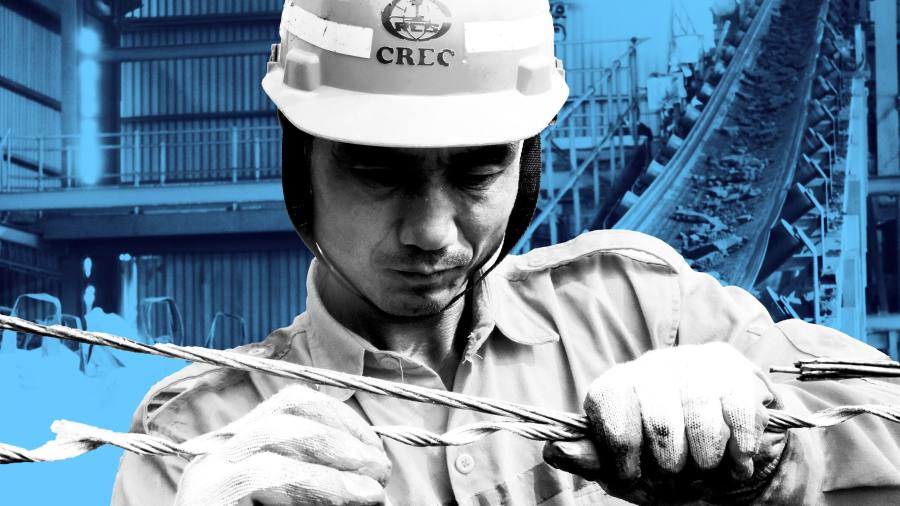Receive free Belt and Road Initiative updates
We’ll send you a myFT Daily Digest email rounding up the latest Belt and Road Initiative news every morning.
China’s metals and mining investments overseas are on track to hit a record this year, new data shows, as the country races to secure resources to defend its position as the world’s biggest producer of electric vehicles, batteries, solar panels and wind turbines.
In the first half of this year, Chinese investments and new contracts in the mining and metals sector topped $10bn, according to a report from the Green Finance & Development Center at Fudan University in Shanghai reviewed by the Financial Times. That figure is more than the 2022 full-year total, and puts this year’s investments on track to exceed the previous record of $17bn in 2018.
China’s investment in the sector includes nickel, lithium and copper projects as well as uranium, steel and iron, highlighting intensifying efforts by Chinese companies across the clean technology supply chain to lock up access to resources amid forecasts of booming long-term demand as the world fights climate change.
The investments, which have spanned countries in Africa, Asia and South America, also reflect President Xi Jinping’s ambitions of economic self-reliance as he seeks to fortify China against the impact of rising geopolitical tensions with the US.
“Overall, China’s BRI [Belt and Road Initiative] engagement seems to become more strategic, in regard to both economic and industrial aspects: more bankable projects relevant for China’s and the host countries’ industrial development,” said Christoph Nedopil, director of the centre at Fudan University.
Once touted by Beijing as the “project of the century”, the Belt and Road Initiative was launched in 2013 offering countries an alternative to western-led financing for infrastructure projects such as roads, railways, bridges, ports and airports.
Xi’s hallmark transnational infrastructure investment programme ultimately drew in 148 countries and has surpassed $1tn in cumulative projects, while endowing Beijing with a potent source of diplomatic influence.
Fears over China’s economic leverage have prompted dozens of countries, including Italy, to review their BRI involvement in recent years, while China’s bailout lending has ballooned following a series of debt write-offs, scandal-ridden projects and allegations of corruption linked to the BRI.
While the BRI’s global footprint has shrunk in recent years, the resources sector has proven a rare bright spot. Beijing’s strategic drive to secure raw materials has also accelerated alongside the development of a sprawling domestic processing sector, further reducing its reliance on overseas refiners for metals including copper, aluminium, lithium and cobalt.
The Fudan University data, released on Tuesday, also showed that in the first half of 2023, investments as a share of BRI engagement reached a record 61 per cent, marking the first six-month period that construction contracts accounted for less than half the value of new BRI financing.
While the size of BRI deals has proportionally contracted, Chinese private companies have increased investment, picking up some of the shortfall from state-owned enterprises that characterised the scheme’s ambitious earlier years.
Nedopil added that changing risk evaluations by Chinese investors and banks meant that new BRI financing was focused on revenue-generating and resource-backed deals, which also benefited metals and mining, rather than construction contracts and infrastructure.
Additional reporting by Harry Dempsey in London
Read the full article here



